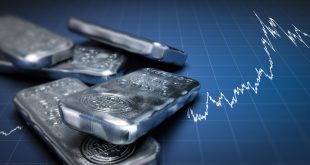The US Federal Reserve officials on Wednesday are expected to set plans to begin accelerating the withdrawal of the massive bond-buying program, enacted in early 2020 to help the economy and financial markets cushion the impact of the coronavirus pandemic, as they seek to remove the crutches from the US economy in order to combat the hottest inflation in 39 years.
The two-day policy meeting is the first since Chairman Jerome Powell conceded that inflation has been higher and longer lasting than US central bank officials initially anticipated.
While testifying before Congress two weeks ago, Powell said that it was time for the Fed to retire the word transitory in describing inflation, partly due to confusion over the word’s meaning, and suggested, instead, that officials may have to react to rising prices by speeding up asset purchases tapering.
At the present point of time, the US economy is strong, “and inflationary pressures are high,” Powell told lawmakers. “It is therefore appropriate in my view to consider wrapping up the taper of our asset purchases..” perhaps a few months sooner”, he added.
That could mean the Fed’s bond-buying program ends in March rather than June, potentially leading to a faster-than-expected interest rate hike. Powell previously said that policymakers wanted to conclude the bond-buying program before raising interest rates from near-zero, where they have sat since March 2020.
Although a faster taper timeline is widely expected, traders, investors and economists will be closely watching Powell and the Fed for signs of a sooner-than-expected interest rate lift-off as the US copes with the highest inflation spike in 39 years.
A majority of traders anticipate at least a 25-basis point hike in May, in addition to a chance of three modest rate increases over the course of 2022, and another a fourth rate hike in December 2022.
Wednesday’s FOMC meeting is critical, as the Federal Reserve is running low on options after waiting too long to begin tightening policy. While it is infrequent to make changes to policy at December meetings, the Fed is under tremendous pressure given the persistence of elevated inflation to expedite its previously announced tapering at a minimum.
The Fed had been purchasing USD 120 billion in Treasury bonds and mortgage-backed securities throughout most of the pandemic in order to keep credit cheap and stabilize the financial markets. In November, Fed officials announced plans to scale back the program by USD 15 billion a month, a timeline that would end the program by late June. Fed officials are expected to accelerate the tapering to USD 30 billion a month.
Reducing bond purchases will be the first step the Fed takes in returning to a more normal policy setting.
The Fed meeting, the last one this year, comes after new government data released last week that revealed the Consumer Price Index rose 6.8% in November from a year ago, marking the fastest increase since June 1982, when inflation hit 7.1%. The CPI, which measures a bevy of goods ranging from gasoline and health care to groceries and rents, jumped 0.8% in the one-month period from October.
While gas prices are starting to decline, there is still plenty of food inflation. There is risk now that inflation has become entrenched in households’ psyches, which further pressures policymakers at the Fed to be more aggressive in their tightening stance.
At the same time, employment is inching closer toward pre-pandemic levels, with the unemployment rate dropping to 4.5% in last month, according to the Labor Department.
One major question, policymakers have to address, is how fast the Federal Reserve wants to move on drawing down its pandemic-era stimulus. That is the question that Fed officials will have to answer in the current meeting, where the major discussion will focus on the pace of the central bank’s wind down of its asset purchase program.
With inflationary pressures continuing to rise, Fed observers expect the policy-setting Federal Open Market Committee (FOMC) to lean into a speedier timeline.
For the Fed, which had insisted for most of 2021 that high inflationary readings would be transitory, the concern is that it may have to play catch-up to control any fears of further inflation.
If the market perceives that the Fed is behind the curve in controlling inflation, it would lead to higher inflation expectations and long-term interest rates, potentially weakening the dollar and pressuring asset values.
Since the depths of the pandemic, the Fed has been buying US Treasuries and agency mortgage-backed securities in the open to signal its commitment to easy money policies.
The Fed was pacing those purchases at a clip of about USD 120 billion per month until November, when the FOMC charted a path for gradually tapering those purchases to a full stop by the middle of 2022.
This week, financial market attention will be focus on the Fed meeting, and cryptocurrencies could rebound and come off pause if the Central Bank’s comments elicit an unambiguous market reaction. Gold and silver prices have been modestly lower in early US trading Tuesday. There was some keener risk appetite in the marketplace recently and that is a negative for the safe-haven metals.
All of the major central banks hold monetary policy meetings this week. The Federal Reserve’s FOMC meeting began Tuesday morning and will conclude Wednesday afternoon with a statement and press conference from Fed Chairman Jerome Powell.
With FOMC expected to announce the acceleration of asset purchases tapering, traders will be also digesting US producer price index report for November which will be released on Wednesday.
Global stock markets were mixed in overnight trading, with European shares mostly up and Asian shares mostly down. US stock indexes are also pointed toward weaker openings when the New York day session began.
The US Federal Reserve’s widely anticipated move to accelerate the end of its bond-buying program is unlikely to lead to volatility in Asian markets, according to a strategist from United Overseas Bank.
In 2013, the Fed triggered a taper tantrum when it began to wind down its asset purchase program. Investor panic triggered selloff in bonds, causing Treasury yields to surge. As a result, emerging markets in Asia suffered sharp capital outflows and currency depreciation, forcing central banks in the region to hike interest rates to protect their capital accounts.
It is worth noting that the current US inflation data appears consistent with faster fed tapering and interest rate hikes. The strength of price increases in the November 2021 CPI (US Consumer Price Index) report reinforces expectations that the Federal Reserve will announce a faster pace of tapering at the December meeting, aiming for a March 2022 end to purchases.
Fed will also likely materially adjust higher its expected path of rates hikes as it focuses on returning policy to neutral over the coming years. While upside risks to inflation likely signal a more hawkish attitude, at the same time the central bank is mindful of the risk that inflation could reasonably get lower on its own and that hiking the policy rate too early or too much could arrest the US economic recovery.

 Noor Trends News, Technical Analysis, Educational Tools and Recommendations
Noor Trends News, Technical Analysis, Educational Tools and Recommendations




